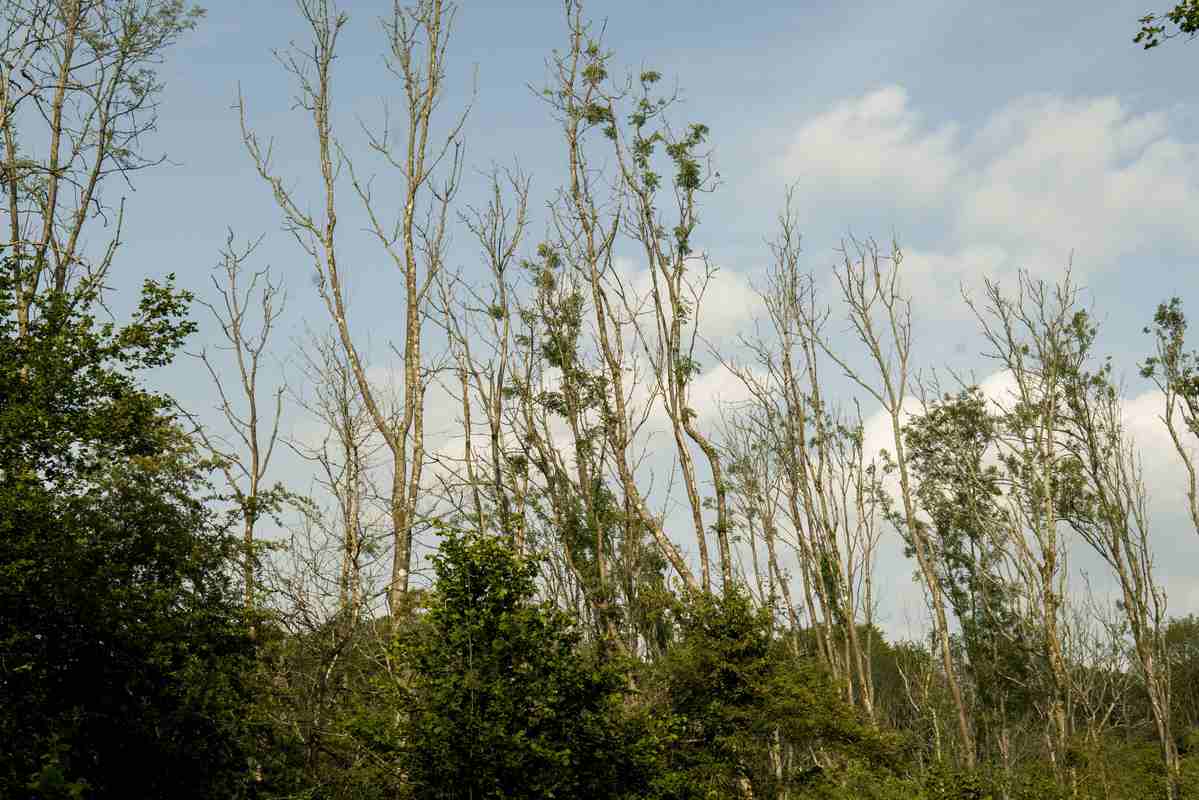
Ash Trees in Britain Are Evolving a Resistance to Fungal Disease Devastating Their Kind Across Europe
How did your country report this? Share your view in the comments.
Diverging Reports Breakdown
Ash Trees in Britain Are Evolving a Resistance to Fungal Disease That was Devastating Woodlands
A new generation of ash trees, growing naturally in woodland, exhibits greater resistance to the disease compared to older trees. Natural selection is acting upon thousands of locations within the ash tree DNA, driving the evolution of resistance as the seedlings grow up through the leaf litter where H. fraxineous reproduces. The study was carried out in Marden Park woodland in Surrey, which is owned and managed by the Woodland Trust. The authors suggest that the findings inform a different strategy for ash dieback management. Afflicted trees should be left alone in order to reproduce and release their thousands of seeds. If they are cleared to soon after infection, the chance that genetic resistance will be passed onto the future generation will be eliminated, they say. The findings offer renewed hope for the future of Ash trees on the British Isles.
Natural selection in woodlands is acting to combat the disease ash dieback—caused by the fungus Hymenoscyphus fraxineus that has devastated ash trees across Europe, say scientists.
Arriving on Britain in 2012, it has killed millions of trees, but a new study conducted by researchers at the Royal Botanic Gardens at Kew, and Queen Mary University of London (QMUL) found that a new generation of ash trees, growing naturally in woodland, exhibits greater resistance to the disease compared to older trees.
Natural selection is acting upon thousands of locations within the ash tree DNA, driving the evolution of resistance as the seedlings grow up through the leaf litter where H. fraxineous reproduces.
The team says its findings, published in the journal Science, offer renewed hope for the future of ash trees on the British Isles, as previous predictions estimated that up to 85% of ash trees would succumb to the disease.
The new study compared the DNA of ash trees established before and after the fungal invasion and found “compelling evidence” for a long-standing prediction of Darwinian theory.
“A tragedy for the trees has been a revelation for scientists: allowing us to show that thousands of genes are contributing to the ash trees’ fightback against the fungus,” said Richard Nichols, Professor of Evolutionary Genetics at QMUL.
“Our detection of so many small genetic effects was possible because of the exceptional combination of circumstances: the sudden arrival of such a severe disease and the hundreds of offspring produced by a mature tree.”
Specifically, the research team observed subtle shifts in the frequencies of DNA variants associated with tree health across thousands of locations in the genome. They say the shifts indicate that the younger generation possesses greater resistance than their predecessors.
It’s an example of a phenomenon pertaining to natural selection but that has been difficult to prove: namely that trait selection can be driven by many small changes, rather than one or two obvious ones, and that this manifests as small changes in thousands of genes.
“We are so glad that these findings suggest that ash will not go the way of the elm in Britain,” said Professor Richard Buggs, of the Royal Botanic Gardens and QMUL. “Elm trees have struggled to evolve to Dutch elm disease, but ash are showing a very different dynamic because they produce an abundance of seedlings upon which natural selection can act when they are still young.”
“Through the death of millions of ash trees, a more resistant population of ash is appearing.”
MORE STORIES LIKE THIS: Ancient Trees Have Incredible Lifespans That Also Help Keep The Surrounding Forests Alive
The authors suggest that the findings inform a different strategy for ash dieback management. Afflicted trees should be left alone in order to reproduce and release their thousands of seeds. If they are cleared to soon after infection, the chance that genetic resistance will be passed onto the future generation will be eliminated.
SPARE SOME LOVE FOR OLD TREES: Witness the Glory of the 2024 European Tree of the Year – Growing in Poland for 200 Years
The study, which was largely funded by the Department for Environment Food and Rural Affairs (DEFRA), was carried out in Marden Park woodland in Surrey, which is owned and managed by the Woodland Trust, and which has been devastated by ash dieback. A spokesperson from the Trust said the research “gives us hope for the future of our ash populations.”
SHARE This Compelling Example Of Evolution With Your Friends…
